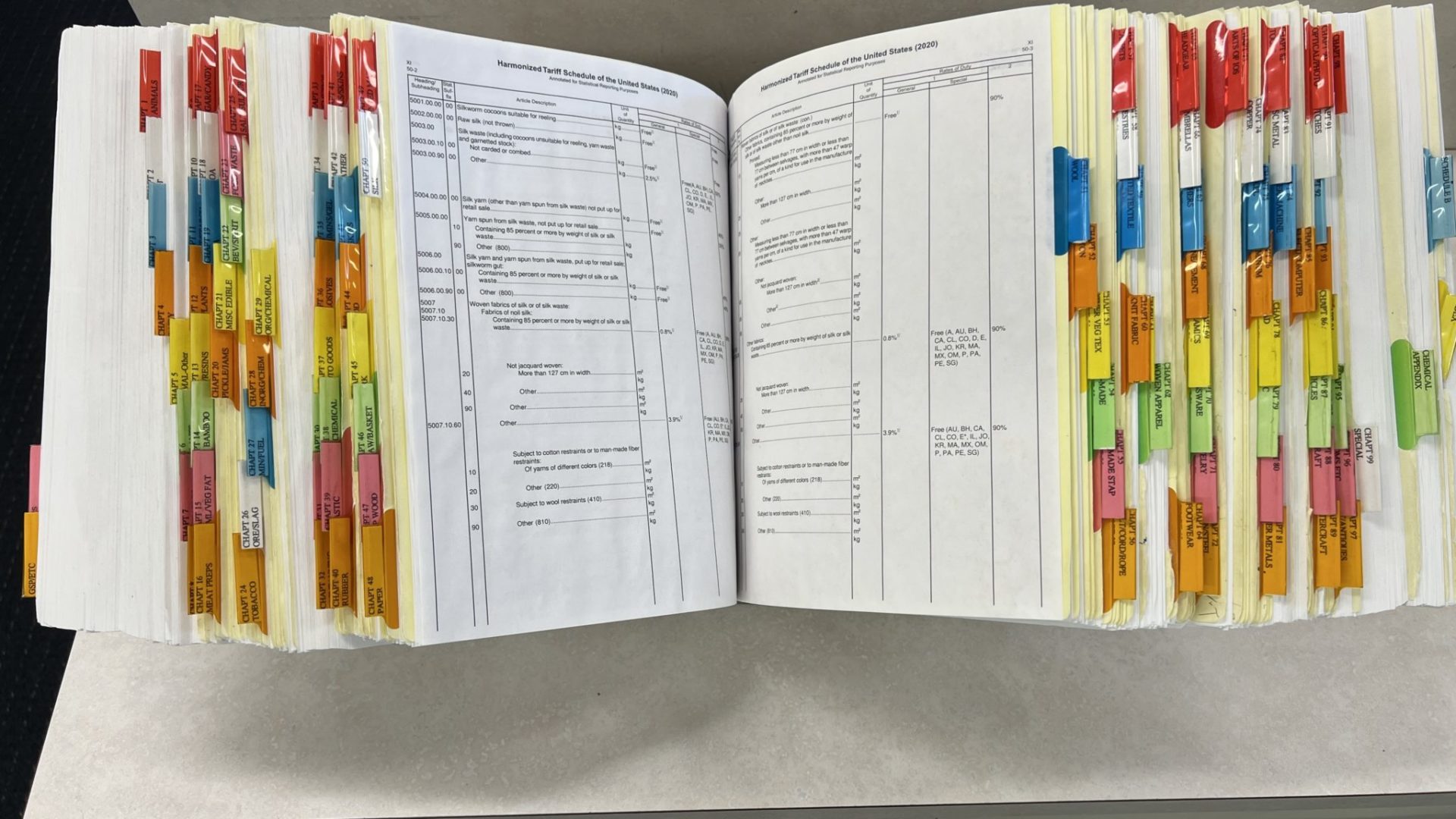
– It’s more than just “What’s the lowest duty rate”.
The Harmonized Tariff Schedule of the United States only rivals the collected works of Shakespeare and every book in the Harry Potter series stacked end-to-end. Perhaps that was a slight exaggeration, but not by much. The printed version is eight inches thick and 15 or so pounds and contains tens of thousands of classifications.
“An item is what it is first, and a part thereof second,” says both the HTS and our Chairman, Tom Case. We say this because there are countless times when we’re trying to ascertain the proper classification of an item and the first question out of an importer’s mouth is, “Well, what’s the lowest duty rate?”
The bad news when it comes to classification is that to plagiarize the phrase “innocent until proven guilty,” as far as CBP is concerned, they’re right about the classification of an item – until you prove otherwise, either by filing a protest post-entry or taking them to court and winning. At an agency with a severe case of institutional brain drain that can more easily spot fakes than comprehend classification concepts, it makes it more challenging for importers to assert their rights and convince the agency otherwise.
We’d go so far as to suggest that CBP read its own Informed Compliance manual on Classification which you (and the agency if they’re so inclined) can find here.
While we agree on the principle of not giving the government a penny more than they’re entitled to, selecting the classification by the lowest duty rate is a sure road to a rate advance, penalty and problems with CBP. It’s not the only reason we hide the column with the duty rates when sending HTS pages to importers, but it’s certainly in the top 3.
The Harmonized Tariff Schedule establishes the rules by which items are classified and are core to every customs broker’s education. It begins – and mostly ends – with the General Rules of Interpretation, or “GRI’s”. You can read them all here.
When we are classifying an item, we will ask a series of questions about that item which our contact in purchasing or logistics may not immediately know and will need to involve an engineer or product designer to get specifications to determine what subheading a product belongs to.
A great example is motors. When we are classifying motors, we may ask questions like:
- Is the motor AC or DC?
- Is it single or multi-phase?
- What is the maximum output?
Camleot secured a six-figure refund for an importer because they were classifying a motor not at the rated output, but the output at which the motor blew – a higher output. Classification of motors is such that the higher the wattage, the lower the ad valorem duty rate.
Questions and product specifications like this allow us to most accurately match an item’s description with its classification which will satisfy Customs’ requirement that the goods be accurately classified and the appropriate duty rate applied.
For importers whose default position is, “Just give me the lowest rate,” this approach will not stand up to CBP’s scrutiny and also runs counter to our position representing both an importer and holding a license issued by Customs. The classification and duty rate must accurately match the goods, otherwise CBP is allowed to issue a rate advance, where they change the classification and will send a bill to the importer which must be paid or else their surety will be responsible and that company will subrogate, or make a claim, against the importer.
Classification is by and large straightforward, but sometimes drifts into the category of a “definite maybe.” Sometimes we consult CBP’s already-issued binding rulings. Other times we may write to CBP for a binding ruling if the product is truly unique and is not explicitly provided for in the existing HTS language. Regardless of how the classification is properly determined, Camelot’s team of licensed customs brokers understands the rules by which the agency operates and how they think to not only get your goods released, but to prevent surprise rate advances prior to liquidation.

